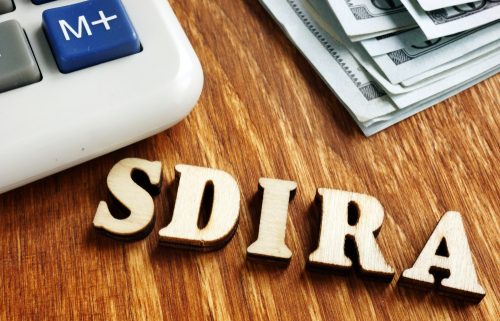Different “Types” of Self-Directed IRAs—What Do They Mean?
If you have ever encountered the phrase “Self-Directed IRAs,” then it is a concept that sounds like it pertains to one specific account type. An IRA is simple enough to understand it is an account you use to build wealth for retirement. But once you dig into the nitty-gritty details of what this actually means, you’ll find a lot of different account types to choose from. There is a Self-Directed Traditional IRA, a Roth IRA, a Solo 401(k), a SEP-IRA, a SIMPLE IRA. Over time, it becomes too much to handle. How do you know which is best for you?
Understand the Differences Between Self-Directed IRAs
Before you get started, you first have to know what different account types mean. You can find more on our Self-Directed IRA accounts page. But here is a brief summary that helps introduce these accounts and what they do:
- Self-Directed Traditional IRA: This is the oldest type of retirement account in the U.S., and many people still use it for before-tax savings. This means that when you invest in a Self-Directed Traditional IRA, those contributions may be tax-deductible. The money within the Traditional IRA is then kept in the account until retirement age, at which point you will pay income tax on the distributions from the account. A Traditional IRA has a relatively low contribution limit, which sometimes sends investors looking to contribute more to other account types.
- Self-Directed Roth IRA: This is one of the most unique account types because it means that you can invest after-tax money, assuming that you meet the requirements set out by the IRS. Why after-tax money? If you pay taxes upfront, then you can potentially save money in the long-term if you expect to be in higher income brackets upon entering retirement age. Additionally, because a Roth IRA uses after-tax money, there is more flexibility with a Roth IRA once you have put money aside in it: it is even possible to withdraw your contributions (but not the growth) without taxes and penalties, depending on your circumstances.
- Self-Directed Solo 401(k): A Self-Directed Solo 401(k) can be considered a replacement for the at-work 401(k) that many self-employed people might otherwise enjoy. Like the 401(k) plan at work, it enjoys high contribution limits and before-tax contributions, which can give people a lot of short-term flexibility as they decide how to put aside the most possible money toward retirement. In many ways, it is similar to…
- Self-Directed SEP IRA: These IRAs are known as Simplified Employee Pension plans—giving them the acronym SEP—but they are available to people who are self-employed as well. A SEP IRA can be a powerful way to invest for retirement because it is a simple and straightforward way to get started. Like the Solo 401(k) plan, it tends to have high contribution limits as well.
- Self-Directed SIMPLE IRA: A SIMPLE IRA is short for a Savings Incentive Match Plan for Employees, which means that it is typically best for small businesses that do have some employees. This can be an effective way for small business owners to construct a retirement plan employees can begin using, which helps incentivize bringing on new talent to the business, thanks to the presence of a retirement plan.
Of course, there is a lot that goes into a decision like which retirement plan to use. If you are considering a Self-Directed IRA like one of those above, chances are that you do not mind taking this kind of decision into your own hands. That is what self-direction is all about.
Interested in learning more about Self-Directed IRAs? Contact American IRA, LLC at 866-7500-IRA (472) for a free consultation. Download our free guides or visit us online at www.AmericanIRA.com.





